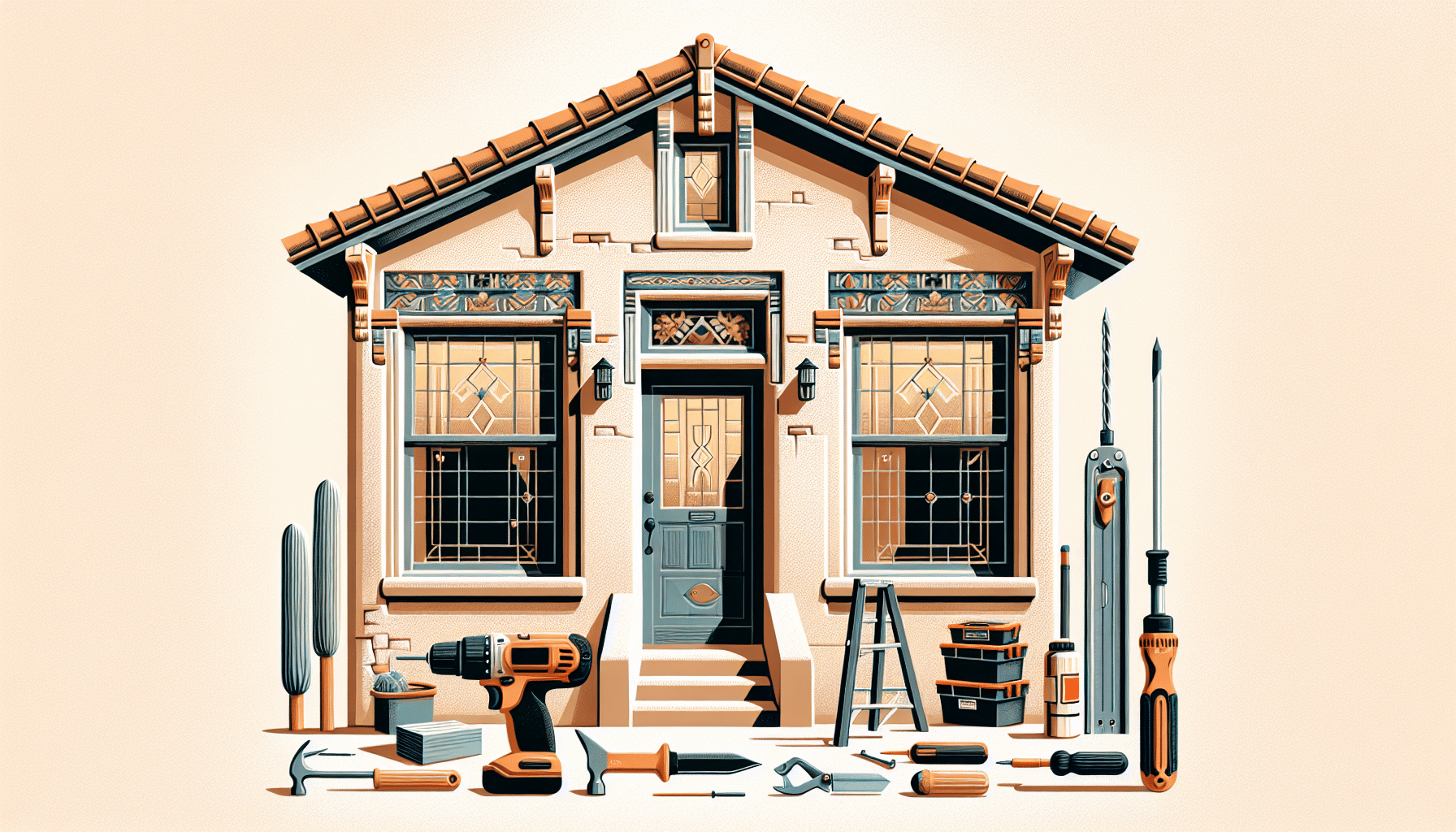DIY window repair can often seem like a daunting task for many homeowners. However, with the right tools and materials, most common window issues can be resolved without calling in the professionals. At Arizona Window Company, we believe in empowering our customers to tackle these problems head-on. This guide will outline the essential tools and materials you’ll need to handle your next DIY window repair project with confidence.
Contents
Understanding the Basics of Window Repair
Before diving into your window repair project, it’s crucial to understand what you’re up against. Windows come in various styles and mechanisms, such as double-hung, casement, or sliding windows. Each type may require a slightly different approach and tools. Knowing the type of window you have is the first step to a successful DIY repair.
Furthermore, identifying the problem area is essential. Common issues include broken glass, faulty seals, or damaged frames. A clear understanding of the problem will guide your tool and material selection, ensuring you’re fully prepared before you start.
The Essential Toolkit for Every DIYer
Having the right tools on hand is half the battle when it comes to DIY home improvement projects. For window repair, there are some tools you simply cannot do without. A screwdriver, for instance, is essential for removing and installing hardware. Meanwhile, a putty knife will come in handy for chipping away old paint or glazing compound.
Other essential tools include a glass cutter for cutting new panes, a measuring tape to ensure the perfect fit, and a caulking gun for sealing gaps. Ensure these tools are within reach before you begin your project to avoid any unnecessary interruptions.
Materials You Can’t Do Without
- Replacement Glass: Whether it’s a tiny crack or a complete break, having the right size and thickness of replacement glass is crucial for a seamless repair.
- Glazing Compound: This material is used to secure the new glass in place and fill any gaps between the glass and the frame, ensuring a tight seal.
- Putty Knife: Ideal for applying the glazing compound evenly and for removing the old glazing.
- Painter’s Tape: This will protect the glass and frame while you’re working and make clean-up a breeze.
- Caulk and Caulking Gun: A must-have for sealing any gaps around the frame, improving both insulation and water resistance.
Preparing Your Workspace
Preparation is key to a smooth and successful DIY project. Start by clearing the area around the window of any furniture or decor to give yourself ample space to work. Lay down a tarp or old newspapers to catch any debris or spills, minimizing cleanup time.
Next, ensure proper lighting. Good visibility is crucial for a meticulous repair, especially when dealing with small, intricate parts of a window. Portable work lights can be a great asset if natural light is not sufficient.
Safety First
DIY projects can be fun and rewarding, but safety should always come first. When dealing with broken glass or sharp tools, wear thick gloves and safety goggles to protect your hands and eyes. Long sleeves and pants can also prevent cuts and scratches.
Moreover, if you’re working on a window that requires you to use a ladder, make sure the ladder is stable and securely placed on a flat surface. Never stretch too far off the ladder; it’s safer to move the ladder than to risk a fall.
Measuring and Cutting Glass
Accuracy is crucial when it comes to measuring and cutting replacement glass. Measure the opening twice to ensure accuracy before cutting the glass. Remember, it’s better to have the glass slightly smaller than the frame rather than too large to fit.
When cutting the glass, use a straightedge and a glass cutter to score the glass before snapping it along the score line. Practice on a spare piece if you’re new to cutting glass to get a feel for the required pressure and technique.
Securing the Glass
Once your glass is cut to size, securing it in place is your next step. Apply a thin layer of glazing compound around the edge of the frame where the glass will sit. Then, carefully place the glass into the frame, pressing gently to ensure it’s firmly seated in the glazing compound.
Apply more glazing compound around the edges of the glass, smoothing it out with your putty knife. This not only secures the glass but also creates a weatherproof seal around it. Allow the compound to dry according to manufacturer instructions before progressing.
Finishing Touches
Once the glazing compound is dry, it’s time to add the finishing touches. If the repaired area needs painting, ensure the glazing compound is fully cured before applying any paint. Using painter’s tape can keep your paint job neat and professional-looking.
Finally, clean the repaired window thoroughly. Remove any excess glazing compound, wipe down the glass, and remove the painter’s tape. A clean, freshly repaired window not only functions well but also enhances the aesthetic appeal of your home.
Maintaining Your Windows
Maintenance is key to preventing future window issues. Regularly cleaning your windows and checking for any signs of wear and tear can extend their lifespan substantially. Make sure to caulk any gaps and repaint the frames as necessary to protect against weather damage.
Additionally, ensure your windows open and close smoothly. Lubricating the tracks and hinges can prevent sticking and make your windows easier to operate, providing lasting comfort and functionality.
Conclusion
We hope our guide empowers you to tackle your next DIY window repair with confidence. Remember, the right tools and materials, combined with a bit of know-how, can make all the difference in the outcome of your project. If you’re ever in doubt or need professional assistance, don’t hesitate to reach out to us by phone at 480-526-4456 or Request a Free Quote. We’re here to help ensure your windows are always in top condition.




